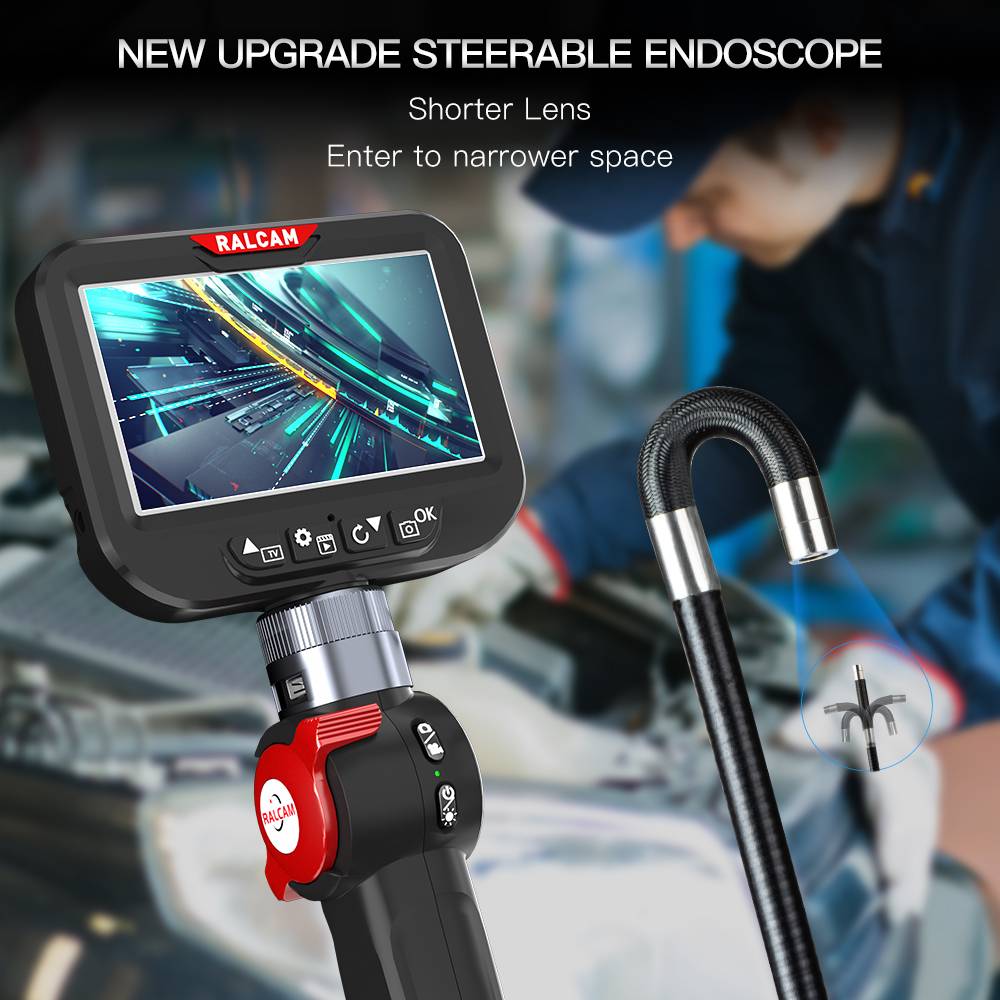 Susan
Susan  2026-01-12
2026-01-12

Borescopes are a necessary piece of equipment for your Quality or Inspection processes. A borescope provides you with the ability to examine those hard to see places within your specific application. A borescope will assist in identifying cracks, rust, debris, signs of overheating, and other nonconformities. Of course, the borescope is considered non-destructive test equipment as you do not have to dismantle or ‘destroy’ the inspection area to take a look inside. Borescopes offer a wide range of pricing and features. Those who invested a significant amount of money in their borescope inspection camera want to protect it but as well as the person that only required a low-cost borescope.
While some damage to your borescope can’t be prevented, there are steps you can take to avoid damage or further damaging your borescope. Early detection of performance issues with your borescope is critical as small problems can rapidly lead to major issues that will take more effort and expense to repair a borescope. Addressing the minor issues with your borescope in a timely fashion usually translates into lower borescope repair costs and faster turnaround times to get the system back in your hands.
Here are some steps you can take to evaluate your borescope before and after use to confirm proper functions or identify damage to your borescope:
Check the image of the borescope. A fiberscope is commonly called a borescope. These inspection devices are exactly what they sound to be, an inspection device that utilizes either glass or plastic fibers to transmit the image to the eyepiece. When viewing through the eyepiece over a white and clean surface. If you see black spots or it looks like someone shook some pepper inside, those are broken fibers. Having a few broken fibers or half tones shouldn’t prevent you from continuing to use your system. However, it does mean that at some point the probe suffered hard contact to the probe, a severe bend beyond the recommended bending radius and you should examine your inspection processes to identify countermeasures. If the fiberscope has too many broken fibers it can prevent you from performing an acceptable borescope inspection. This is true of the mini borescope as well. If you have a videoscope, that is a borescope that offers a micro camera at that tip you can still confirm image quality. The major concern for videoscope is, image quality is paramount when and if the system is being used in higher than ambient air temperatures. The borescope camera in most cases is designed for use in temperatures up to 176 F. If the image appears to be a bit blurry this could be a sign of use in high-temperature exposure. You must allow the inspection item to cool down before introducing the inspection camera. This is extremely important for aviation borescope inspections as the engine may have just been running.
Check the Insertion probe. The borescope probe, also known as borescope wand or borescope insertion tube varies in length and diameter. The most common diameters are 4mm and 6mm diameters. Borescope probe lengths can be as long as 100 feet with pneumatic articulation. The most popular length for an articulating borescope is usually between 2 and 3 meters. For most industrial applications the borescope will offer either a stainless steel or tungsten braided sheathing. Inspect the probe to confirm the absence of any frayed wires or kinks in the probe. The frayed wires have the potential to hang up as you are introducing the borescope into the inspection area. This could cause you to have to use more force as you enter and exit the probe. In addition, the exterior sheathing is designed to protect not only the communication ribbon that travels down the length of the probe to the tip from the control station but in some cases the fiber optic lighting. Replacing sheathing on a borescope is not an expensive repair but if the ribbon is damaged the cost is much more significant. It is highly recommended that you repair any minor damage to the probe sheathing before it becomes a much more costly issue.
Check the bending section. The bending section or the borescope articulation section is the most sensitive part of your borescope. A lot is going on in that small area at the distal tip of the borescope probe. The last couple of inches of the probe contains a mechanical vertebra that allows the probe to be manipulated with the articulation cables as well as protect the communication ribbon and lighting conduit. Since this part of the borescope will be actuated repeatedly, the best articulating borescope protect this section of the probe with tungsten as it is a harder metal. Under the metal sheathing there is a rubber sheathing or sometimes called a rubber boot which is designed to aid in providing protection against liquid migration entering into the endoscope probe or the camera housing. If you identify signs of wear, the rubber tips being exposed or if there are ripples in the bending section that provide resistance when entering or removing the probe from the inspection area, it is wise to address this early instead of later.


